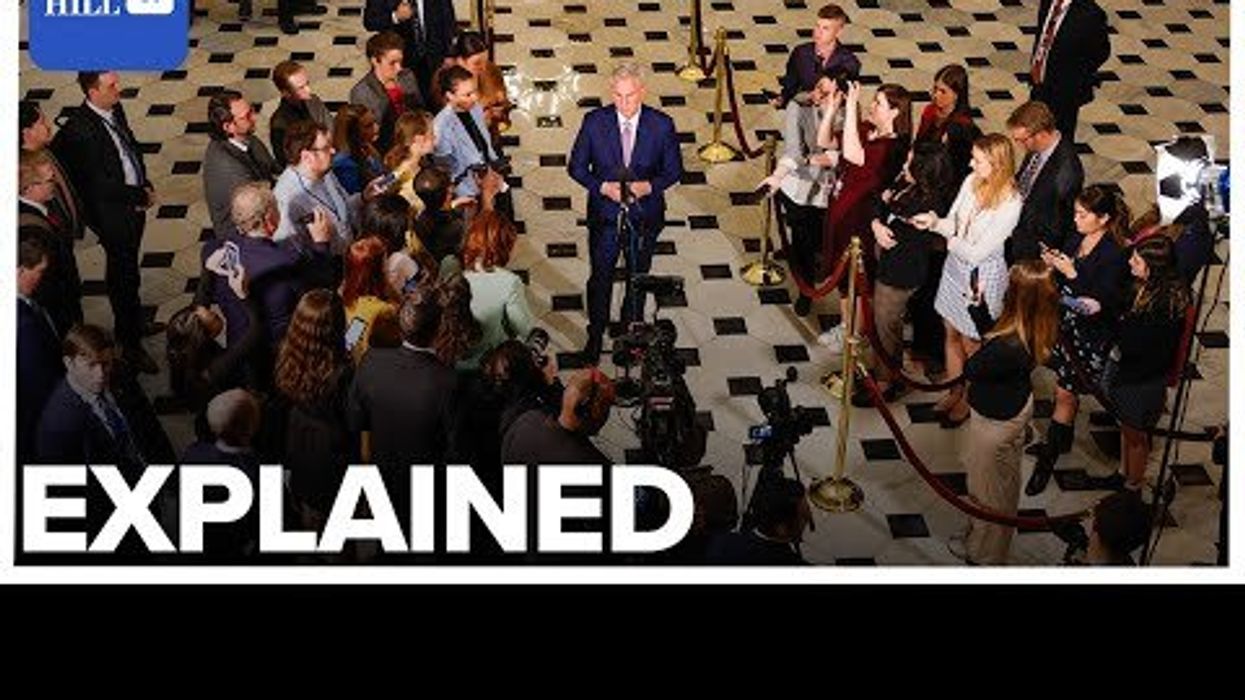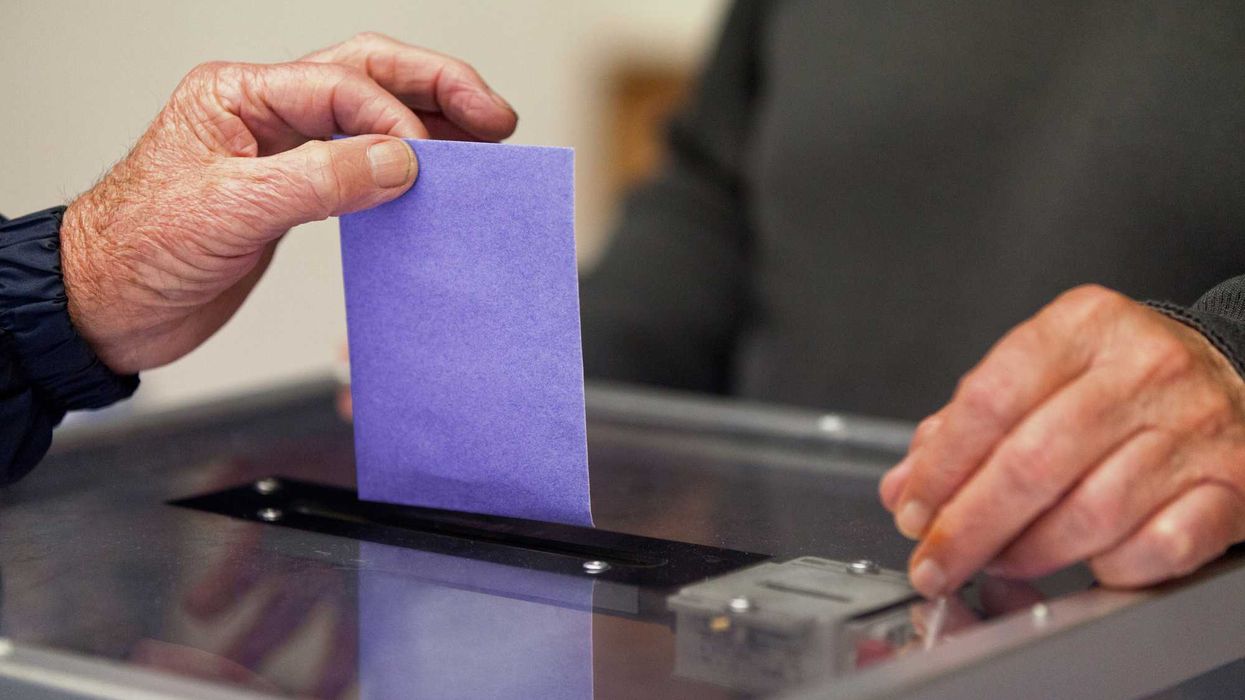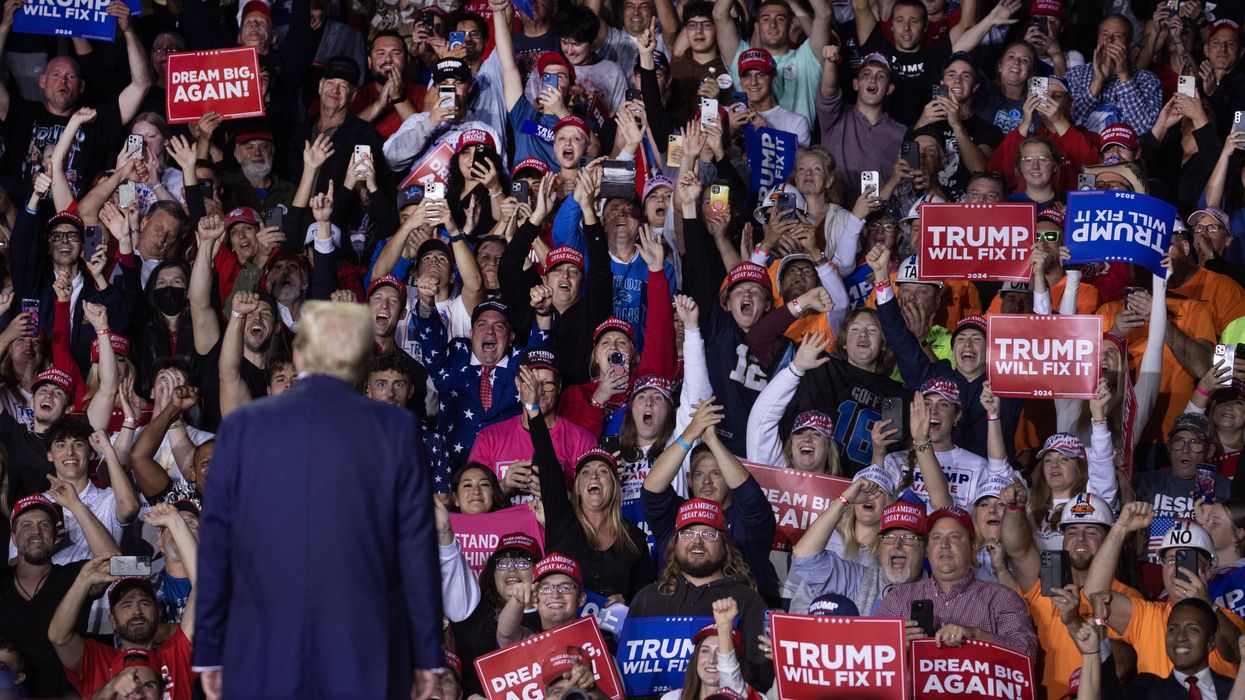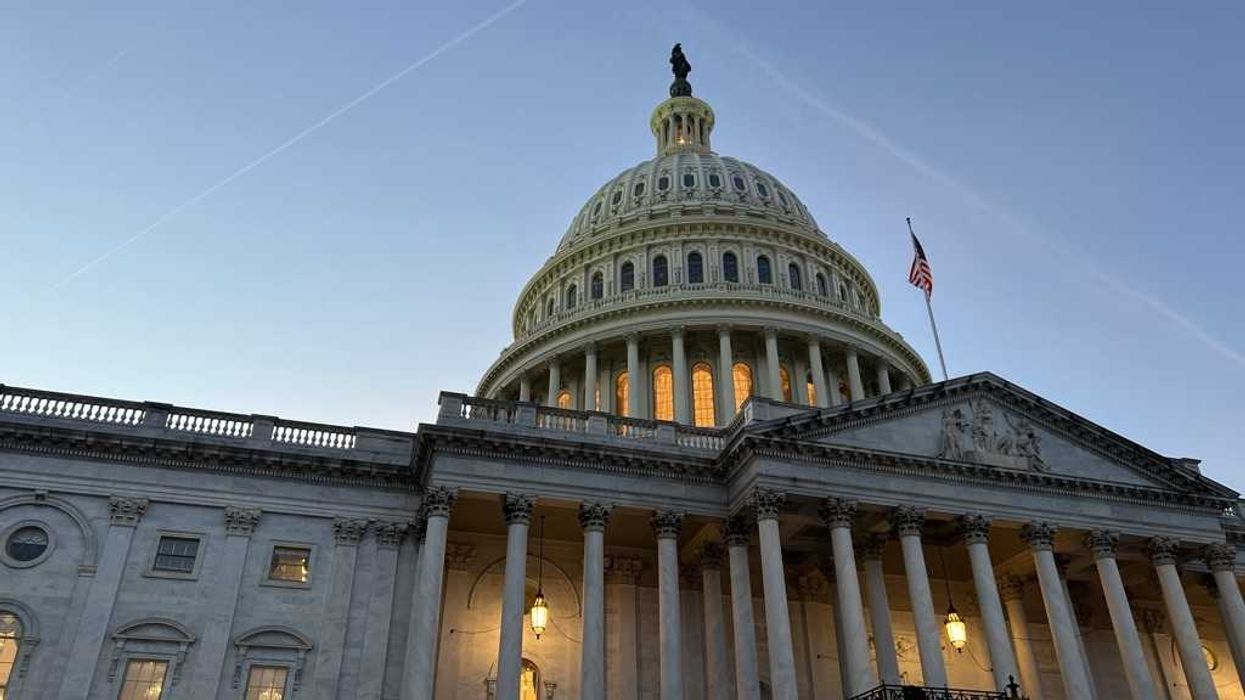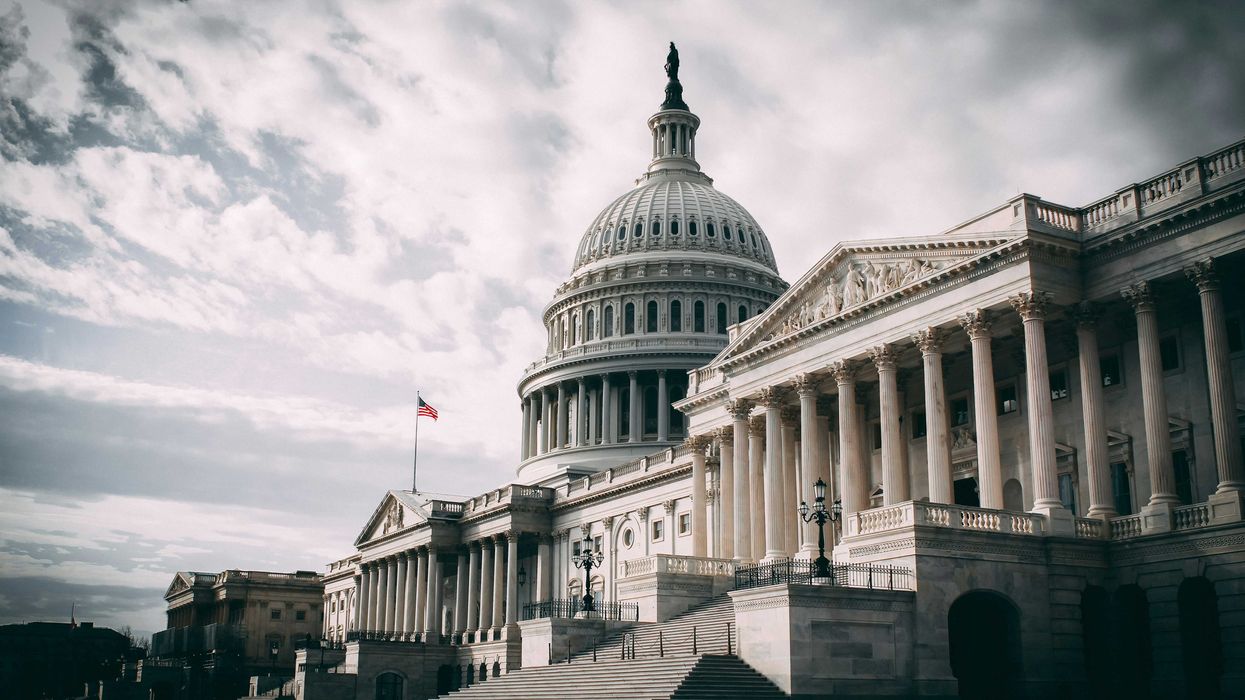President Biden and lawmakers on Capitol Hill are entrenched in a high stakes battle over the debt limit – also known as the debt ceiling. But what exactly is the debt ceiling?
Site Navigation
Search
Latest Stories
Start your day right!
Get latest updates and insights delivered to your inbox.
Top Stories
Latest news
Read More
Democracy 2.0 Requires a Commitment to the Common Good
Dec 05, 2025
From the sustained community organizing that followed Mozambique's 2024 elections to the student-led civic protests in Serbia, the world is full of reminders that the future of democracy is ours to shape.
The world is at a critical juncture. People everywhere are facing multiple, concurrent threats including extreme wealth concentration, attacks on democratic freedoms, and various humanitarian crises.
Instead of a world characterized by exploitation, eradication, and diminishment of political expression, we need a bold new social contract in which democracy evolves into a lived expression of political values that are centered on a relentless commitment to the collective well-being of our societies and the planet.
Reining in Extreme Wealth
The staggering concentration of wealth in the hands of a select few casts a long shadow over democracy. Not only does it create wealth inequality but it also it produces and exacerbates other inequalities like race and gender.
In 2024, the richest 1% of people worldwide owned more than the bottom 95% combined. And it's not just global inequality that has grown; inequality within countries has also become worse. This level of inequality is eroding trust in institutions, which in turn is weakening democracies. In Indonesia, for example, people "who believe socio-economic inequality is unjust, are more likely to hold negative attitudes toward democracy."
Beyond breaking public trust, extreme wealth has been used to sway the political landscape, often at the expense of the common good. While the relationship between President Donald Trump and Elon Musk received much scrutiny, relationships between the ultra-wealthy and anti-democratic leaders are not unique to the US. In India, billionaires like Mukesh Ambani and Gautam Andani have been longtime supporters of Prime Minister Narendra Modi and his party. Billionaire Eduardo Eurnekian's backing of Javier Milei in Argentina and Lajos Simicska's role in the rise of Prime Minister Viktor Orbán in Hungary are other examples.
This corrosive impact of extreme wealth on democracy is undeniable and must be reined in. One way of doing this is through the effective taxation of wealth. According to the Tax Justice Network, a well-implemented wealth tax that is "flanked by globally coordinated measures to disallow tax abuse" could raise more than US $2 trillion. This would provide a stable source of revenue for countries and would also contribute toward the redistribution of wealth and security.
Redistribution alone, however, will not solve inequality. In South Africa, for instance, the wealthiest 1% have seen their pretax incomes soar by nearly 80%, while the poorest 20% have watched theirs shrink. This stark contrast reveals that any redistribution must be paired with policies that shape how pretax incomes are distributed in the first place. Tackling the deep-rooted imbalances of power and opportunity that stem from unequal ownership is crucial alongside enforcing robust antitrust measures to break up corporate dominance and stop unfair business practices.
Restitching the Unravelling Social Safety Net
Public institutions that provide public services are on the decline. Social spending has decreased worldwide, especially health care. From South Africa to Britain, people's struggle to access essential services like health care has resulted in a distrust of the political system. Anxiety over the perception that immigrants are overwhelming public resources is also rising. Using data from across 30 European countries, scholars have traced how ill health translates into anti-immigrant sentiment.
The unravelling social safety net has created an environment where exclusionary ideologies easily spread. Declining public services play a role in the surge of right-wing populist and nativist sentiment. Unscrupulous politicians use the tension to distract from their failures by scapegoating immigrants.
The chainsaws being taken to social spending that have now been popularized by figures like Milei and Musk must be rejected. Public services, which have been key in reducing global poverty and redistributing wealth and security, are an essential investment in communities and society.
Of course, reining in extreme wealth and increasing social spending are not silver bullet solutions for revitalizing democracy. More is needed, including dismantling corporate power, providing material security, global and countrywide wealth redistribution, and reparations. Each of these options reflects a commitment to the common good.
It is time for us to acknowledge the depth of inequality that exists and act in ways that benefit the needs of all and the planet, rather than the narrow self-interests of the few. Working toward collective freedom, shared prosperity, justice, and dignity is the only meaningful way forward.
Democracy 2.0 Requires a Commitment to the Common Good was originally published by the Charles F. Kettering Foundation and is republished with permission.
Keep ReadingShow less
Recommended
Democracy 2.0 Requires a Commitment to the Common Good
Dec 05, 2025
From the sustained community organizing that followed Mozambique's 2024 elections to the student-led civic protests in Serbia, the world is full of reminders that the future of democracy is ours to shape.
The world is at a critical juncture. People everywhere are facing multiple, concurrent threats including extreme wealth concentration, attacks on democratic freedoms, and various humanitarian crises.
Instead of a world characterized by exploitation, eradication, and diminishment of political expression, we need a bold new social contract in which democracy evolves into a lived expression of political values that are centered on a relentless commitment to the collective well-being of our societies and the planet.
Reining in Extreme Wealth
The staggering concentration of wealth in the hands of a select few casts a long shadow over democracy. Not only does it create wealth inequality but it also it produces and exacerbates other inequalities like race and gender.
In 2024, the richest 1% of people worldwide owned more than the bottom 95% combined. And it's not just global inequality that has grown; inequality within countries has also become worse. This level of inequality is eroding trust in institutions, which in turn is weakening democracies. In Indonesia, for example, people "who believe socio-economic inequality is unjust, are more likely to hold negative attitudes toward democracy."
Beyond breaking public trust, extreme wealth has been used to sway the political landscape, often at the expense of the common good. While the relationship between President Donald Trump and Elon Musk received much scrutiny, relationships between the ultra-wealthy and anti-democratic leaders are not unique to the US. In India, billionaires like Mukesh Ambani and Gautam Andani have been longtime supporters of Prime Minister Narendra Modi and his party. Billionaire Eduardo Eurnekian's backing of Javier Milei in Argentina and Lajos Simicska's role in the rise of Prime Minister Viktor Orbán in Hungary are other examples.
This corrosive impact of extreme wealth on democracy is undeniable and must be reined in. One way of doing this is through the effective taxation of wealth. According to the Tax Justice Network, a well-implemented wealth tax that is "flanked by globally coordinated measures to disallow tax abuse" could raise more than US $2 trillion. This would provide a stable source of revenue for countries and would also contribute toward the redistribution of wealth and security.
Redistribution alone, however, will not solve inequality. In South Africa, for instance, the wealthiest 1% have seen their pretax incomes soar by nearly 80%, while the poorest 20% have watched theirs shrink. This stark contrast reveals that any redistribution must be paired with policies that shape how pretax incomes are distributed in the first place. Tackling the deep-rooted imbalances of power and opportunity that stem from unequal ownership is crucial alongside enforcing robust antitrust measures to break up corporate dominance and stop unfair business practices.
Restitching the Unravelling Social Safety Net
Public institutions that provide public services are on the decline. Social spending has decreased worldwide, especially health care. From South Africa to Britain, people's struggle to access essential services like health care has resulted in a distrust of the political system. Anxiety over the perception that immigrants are overwhelming public resources is also rising. Using data from across 30 European countries, scholars have traced how ill health translates into anti-immigrant sentiment.
The unravelling social safety net has created an environment where exclusionary ideologies easily spread. Declining public services play a role in the surge of right-wing populist and nativist sentiment. Unscrupulous politicians use the tension to distract from their failures by scapegoating immigrants.
The chainsaws being taken to social spending that have now been popularized by figures like Milei and Musk must be rejected. Public services, which have been key in reducing global poverty and redistributing wealth and security, are an essential investment in communities and society.
Of course, reining in extreme wealth and increasing social spending are not silver bullet solutions for revitalizing democracy. More is needed, including dismantling corporate power, providing material security, global and countrywide wealth redistribution, and reparations. Each of these options reflects a commitment to the common good.
It is time for us to acknowledge the depth of inequality that exists and act in ways that benefit the needs of all and the planet, rather than the narrow self-interests of the few. Working toward collective freedom, shared prosperity, justice, and dignity is the only meaningful way forward.
Democracy 2.0 Requires a Commitment to the Common Good was originally published by the Charles F. Kettering Foundation and is republished with permission.
Keep ReadingShow less

Daniel Flores (trumpet) and Alberto Saberben (Peruvian flag) cheer on the Fire from Sector Latino, Wednesday, Oct. 22, 2025. Tomas Moran/ Illinois Latino News Network
Tomas Moran/ Illinois Latino News
Encendidos: Sector Latino’s Passion On And Off The Pitch
Dec 05, 2025
BRIDGEVIEW, Ill. – There’s a chill in the Illinois air as cars zoom past on I-294, but this is no ordinary fall evening for Chicago Fire FC fans.
Drums and chants of “dale Chicago” echo out of SeatGeek Stadium, where the Fire are ending the longest playoff drought in the MLS’s in a wild-card matchup against Orlando City. At the onset of the second half, Illinois native Brian Gutiérrez, or “Guti,” finds the back of the net and scores the Fire’s first playoff goal in 13 years. He sprints straight to the supporters’ section to celebrate with Sector Latino, which erupts to embrace its hometown hero.
“There’s a connection between the players and the fans that hasn’t been there for a long time,” said Mauricio Pineda, former chair of Section 8, an independent Fire supporter’s association.
Sector Latino, a separate supporter group for the MLS’ Chicago Fire, had a roller coaster 2025 season. Their passion for the club has been strained by regulations limiting protests against the Trump administration’s immigration policy. The Fire’s on-field success coincided with political tensions in Chicago surrounding the deployment of ICE agents and the National Guard.
A banner stating “Fire fans contra ICE” led to three Sector Latino members receiving yearlong bans. The group and Section 8 requested the club to release a message supporting communities impacted by ICE. Such a message has not yet arrived.
“I understand that they’re trying to avoid conflict,” said Pineda. “But we spend our hard-earned money, time, and effort on this team. It sort of feels like a slap in the face when you don’t get a statement from the team supporting the things that are important to you.”
A high point for Sector Latino and the club at large came on Oct. 22, when the Fire took on Orlando in their playoff opener. Guti’s goal kick-started a 3-1 victory, Chicago’s first playoff win since 2009.
Sector Latino stood and chanted all game, alongside Section 8, which encompasses eight other groups. Fans skipped work and sat through hours of traffic to reach the southwest Chicago suburb. Supporting the Fire unconditionally through last-place finishes and early eliminations finally paid off. Rain or shine, the Fire faithful stuck with the team. Guti, a homegrown Mexican-American player, sparked the first flame Chicago had seen in over a decade.
“They’re my people,” said Guti at the postgame press conference. “We come from the same people and we live the same background.”

Brian Gutiérrez at the postgame press conference following Chicago’s win against Orlando, Wednesday, Oct. 22, 2025. Tomas Moran/ Illinois Latino News Network
“It was heartbreaking to not be a part of it,” said Nate Cubeta, one of the three Sector Latino members currently serving a ban.
Cubeta and siblings Edith and Julio Lopez brought a banner to the Chicago Fire matchup against Charlotte FC on June 28. It featured former Mexico and Chicago star Cuauhtémoc Blanco and the message “Fire fans contra ICE”. The trio made the sign without consulting other Sector Latino members and displayed it at two games before the Charlotte contest.

“Fire fans contra ICE” banner displayed at Soldier Field during the Chicago Fire’s game versus Charlotte FC, Monday, June 28, 2025 (image courtesy of Nate Cubeta for Illinois Latino News Network).
At the game, stadium officials asked Cubeta to take down the banner. He refused, and it was confiscated. The club notified the fans shortly after the game that all three were banned from Fire games for the next 365 days.
“We created the sign knowing it was technically in violation of the regulations,” said Cubeta.
MLS’s Fan Code of Conduct bars “displaying signs, symbols, or images for commercial purposes or for electioneering, campaigning, or advocating for or against any candidate, political party, legislative issue, or government action.”
Although Cubeta and both Lopez siblings were aware of the potential repercussions of the banner, they did not expect such a reaction.
“We were shocked and appalled by the punishment,” said Cubeta. “A one-year punishment is typically only for a violent incident.”
Sector Latino and Section 8 both released statements condemning the ban. The open letter from Sector Latino inquired, “Is it that Chicago Fire ownership only cares to collect money, content, and cache from Chicago’s immigrant community and offer no support in return?”
A protest was also organized by Sector Latino and Section 8 for the fixture with San Diego FC on July 12. Backs turned against the pitch, the entire supporters’ section fell dead silent for the opening 15 minutes of the match. The constant drumming, flag waving, and chanting the Fire is accustomed to, even in the worst of times, was gone.
The Fire’s front office issued a statement to the press, declaring, “The Chicago Fire remain committed to providing a safe and enjoyable environment for all fans.” Supporter Relations Coordinator Roberto Díaz stopped responding to further messages seeking comment.
Ultimately, the Philadelphia Union eliminated Chicago on Nov. 1, ending the Fire’s 2025 campaign. With the successful, yet tumultuous, season behind them, the community remains at the heart of Sector Latino.
“I feel at home in Sector,” said Cubeta. “It’s about having options for people to support in a way they’re comfortable with.”
With a new stadium in the works for 2028, fans are cautiously optimistic for the Fire’s future. Soccer culture is community-based, Sector Latino and Section 8 want to ensure that the Fire maintains that fundamental value.
“Soccer is the only professional sport in the US where fans get a still say on how the team is run,” said Pineda. “We want to ensure that fans don’t lose that. Today, the immigrant community is being impacted by ICE, but tomorrow there may be another issue fans want to speak up about.”
Soccer teams traditionally represent communities, and supporter groups are the conduit through which residents show their support and make their voices heard.
“With the Fire, you still have a say,” Pineda said. “You still get to express to the team what you want to see. It provides fans a platform to communicate what’s important to them.”
“The visibility, the power is in the stadium,” said Cubeta. “That’s a part of stadium supporters’ culture.”
One thing is for sure, though. Sector Latino continues to believe in the Chicago Fire as a symbol of its community.
“I’ll definitely be at the first game I’m allowed back,” said Cubeta. “They can’t get rid of me that easily.”

View of Sector Latino from behind at SeatGeek Stadium, Wednesday, Oct. 22, 2025. Tomas Moran/Illinois Latino News Network
Encendidos: Sector Latino’s Passion On And Off The Pitch was first published on Illinois Latino News and was republished with permission.
Tomas Moran is a bilingual student journalist in his second year at Northwestern University, with a focus on radio and television broadcasting.
Keep ReadingShow less

man and woman holding hands
Photo by Austin Lowman on Unsplash
Adoption in America Is Declining—The Need Isn’t
Dec 04, 2025
Two weeks ago, more than 50 kids gathered at Busch Gardens in Tampa, Florida, not for the roller coasters or the holiday decorations, but to be legally united with their “forever” families.
Events like this happened across the country in November in celebration of National Adoption Month. When President Bill Clinton established the observance in 1995 to celebrate and encourage adoption as “a means for building and strengthening families,” he noted that “much work remains to be done.” Thirty years later, that work has only grown.
Adoption in the United States is declining. International adoptions have plummeted from a high of nearly 23,000 in 2004 to under 1,300 in 2023. Some of this is due to policy changes curtailing adoption from countries that once made up most foreign adoptees, but the shift doesn’t end there. Domestic U.S. adoptions from foster care have fallen as well and are now at their lowest level since 2003.
This is not because the need has disappeared. There are 117,000 children in the U.S. foster care system waiting to be adopted. Globally, the number of waiting children is estimated in the tens of millions – including from the countries from which American families can still adopt.
Meanwhile, millions of Americans desperately want to be parents. Nearly 1 in 5 married women aged 15-49 have experienced infertility, and demand for IVF and surrogacy is soaring. An astonishing 10% of American women of child-bearing age have undergone some kind of fertility treatment, guided by doctors who focus almost exclusively on medical interventions, rarely discussing adoption at all.
There are so many children who need families—and families who need children—yet adoption remains an afterthought. Eighty-six percent of Americans say they have a positive view of adoption. Almost 40% say they’ve considered it. But fewer than 1% have adopted. As sociologist Allen Fisher writes, “adoption is a possibility that is often considered, but seldom chosen”.
Why the gap between interest and action?
There are fears about the unknowns, the emotional toll, or how friends or family will react. There is the unsettling feeling of relinquishing control over one of life’s most consequential decisions. These are real concerns that need to be thoughtfully weighed and considered. For those who decide to move forward, they must then contend with the financial costs and bureaucratic hurdles from multiple governmental and non-profit agencies–and, in international cases, two different countries.
An intercountry adoption can take years to complete, and wait times are only increasing, leaving children in limbo longer despite the harm this causes them. As the National Council for Adoption has advocated, this is in part because “rather than forging new partnerships and engaging in active diplomacy, the State Department has settled into regulatory box-checking.” Congress has the opportunity–and the responsibility–to hold the State Department accountable for prioritizing children's needs and restoring adoption pathways that will give more children loving, permanent homes, sooner.
On the domestic front, urgent action is needed as well. In a promising step, President Trump signed an Executive Order two weeks ago directing the Secretary of Health and Human Services to modernize the child welfare system by reducing unnecessary paperwork and improving transparency, efficiency, and outcomes for American foster youth. The initiative could be transformative - but only if the 962-word order is followed-up with real, concrete actions and tangible policy changes. That work is only now beginning.
Despite the imperfections and challenges, I know firsthand that adoption remains one of the most meaningful decisions a family can make. After years of paperwork–home studies, background checks, financial reports, and recommendation letters–that were more exhaustive than a college or job application, my husband and I adopted a little boy in 2021. In addition to the anxiety of a global pandemic, we added the general nervousness of first-time parents and the unique questions that come with adoption. What happened in the years before we met our child? What would it mean to parent a child not biologically related? Would that change the love we felt?
It didn’t. We love him as fully and fiercely as any parents love their child—because he is ours, not by biology but by choice. We have watched him grow into a joyful, deeply empathetic and thoughtful child who embraces his unique identity. He proudly says he has “two homes” and many parents. Our family has expanded not just through him but through his foster family, who are now part of our extended family as well. And yes, we still get a laugh when unknowing strangers debate whether he looks more like me or my husband.
Adoption means paperwork and uncertainty and years of waiting—but also transformational love, expanded identity, and deep belonging. In a world where so much feels broken and divided, creating family across differences is a quiet but radical expression of hope. A declaration that every child is worthy of love, stability, and family—not just in theory, but in practice. And in a culture where the conversation often stops at “awareness,” adoption is the work of showing up.
Let this be an invitation to take one small step. Learn about the foster care system and the kids in your community who are waiting. Talk to someone who has adopted or was adopted. Read a story different from your own. And if you’re already considering fostering or adopting, go one step deeper. Talk to a social worker. Attend an information session. Fill out a form, sign up for a class, or make the call you’ve been putting off.
Adoption won’t solve all of the world’s problems—but it will change a child’s world. And it may just change yours.
Amy Chen is a senior business executive with two decades of leadership experience in the consumer, food, and tech industries and a grateful adoptive mother. She is a PD Soros Fellow and a Public Voices Fellow with The OpEd Project.
Keep ReadingShow less
Load More





